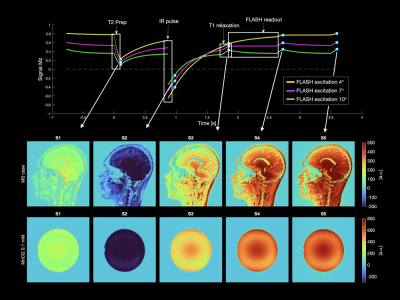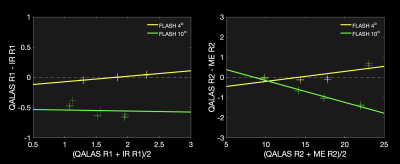Anders Tisell1,2, Peter Lundberg1,2, Marcel Jan Bertus Warntjes1, and Frederik Testud3
1CMIV, Linköping University, Linköping, Sweden, 2Medical Radiation Physics, Linköping University, Linköping, Sweden, 3Siemens Healthcare AB, Malmö, Sweden
1CMIV, Linköping University, Linköping, Sweden, 2Medical Radiation Physics, Linköping University, Linköping, Sweden, 3Siemens Healthcare AB, Malmö, Sweden
In this work we validate an implementation of 3D QALAS for 3T. In conclusion we see a high accuracy for estimation of R1 and R2 compared to gold standard measurements. However we also see a small effect of B1+ inhomogeneities in the estimated R1.

Figure 1. (top panel) the signal model for the QALAS sequence is shown with M0=1, describing the effect of different flip angles (different colours), and the corresponding measured data. (middle panel) QALAS data from an MS patient showing the signal maps for the individual dynamics. (bottom row) Corresponding QALAS data of a relaxation phantom.
